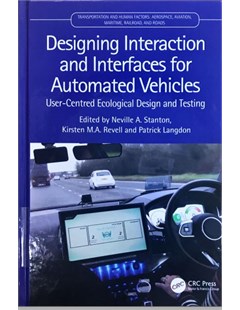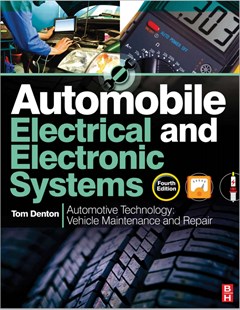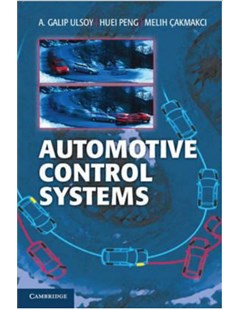Designing Interaction and Interfaces for Automated Vehicles
Designing Interaction and Interfaces for Automated Vehicles introduces a novel method that combines both systems thinking and inclusive user-centred design. It models driver interaction, provides design specifications, concept designs, and the results of studies in simulators on the test track, and in road going vehicles.
2010
Designing Interaction and Interfaces for Automated Vehicles introduces a novel method that combines both systems thinking and inclusive user-centred design. It models driver interaction, provides design specifications, concept designs, and the results of studies in simulators on the test track, and in road going vehicles.
The contents of the book is about UCEID - the best of both worlds: combining ecological interface design with user - centred design in novel human factors method applied to automated driving; using UCEID to include the excluded: an autonomous vehicle HMI inclusive design case study; designing autonomy in cars: a survey and two focus groups on driving hsbits of an inclusive user group, and group attitudes towards autonomous cars. Lo - Fi and Hi - Fi simulators: an evaluation of inclusive dialogue - based interfaces for the takeover of control in autonomous cars; the design of takeover requests in autonomous vehicles: low - fidelity studies; how what it for you? Comparing how different levels of multimodal situation awareness feedback are experienced by human agents during transfer of control of the driving task in a semi - autonomous vehicle; human driver post - takeover driving performance in highly automated vehicles; validating operator event sequence diagrams: the case of automated vehicle - to - human driver takeovers. Benchmarking: breaking the cycle of frustration: applying neisser's perceptual cycle model to drives of semi - autonomous vechicles; semi - automated driving has higher workload and is less acceptable to drivers than manual vehicles: an on - road comparison of three contemporary SAE level 2 vehicles; the iconography of vehicle automation - a focus group study. HMI simulator: customisation of takeover guidance in semi - Autonomous vehicles; effects of interface customisation on driver's takeover experience in highly automated driving; accommodating driver's preferences using customised takeover interface; modelling automation - human driver interactions in vehicle takeovers using OESDs; feedback in highly automated vehicles: What do drivers rely on in simulated and real - world enviornments?. On - road and design guidelines: can allowing interface customisation increase driver; effects of customisable HMI on subjective evaluation of takeover experience on the road; accommodating driver's preferences using a customised takeover interface on UK motorways; validating OESDs; in an on - road study of semi - automated vehicle - to - human driver takeovers; design constraints and guidelines for the automation - human interface.
Neville Stanton. Designing Interaction and Interfaces for Automated Vehicles. CRC Press, 2010
Bộ sưu tập Lĩnh vực Công nghệ Ô tô
 |  |  |
Thứ Ba, 13:27 29/11/2022
Copyright © 2018 Hanoi University of Industry.